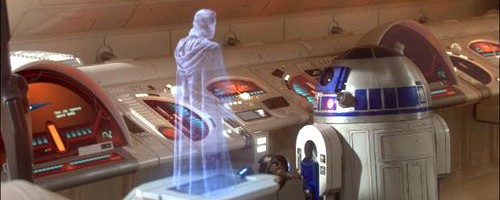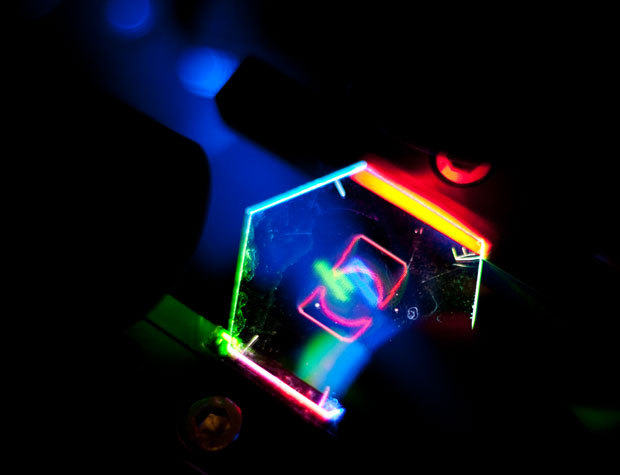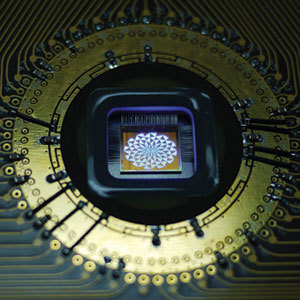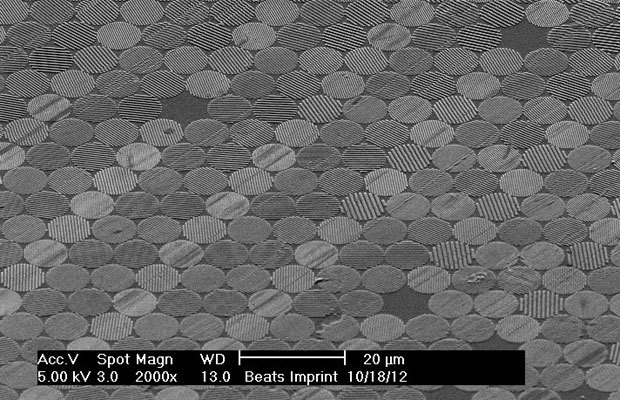3D displays for smartphones

Probably among you there is no one who would not have watched at least one film from the Star Wars series. Surely you once admired the idea of holograms depicted there, when the characters communicated not with two-dimensional pictures, but with small three-dimensional pictures. Or remember the strange game that S3RO and Chewbacca watched? By the way, she was shot frame by frame, like a classic puppet animation.

')
It is possible that within 2-3 years a commercial product will appear on the market with a display that will allow displaying an image close to holographic. This can be hoped for by the development of two companies, which we would like to briefly tell you.

This photo shows the lightfield (from the "light field") display from the company Ostendo, which is able to create a three-dimensional image.
When you try to look at stereoscopic pseudo-three-dimensional images, this is a kind of mental gymnastics. In reality, while we are looking at an object, the brain “proceeds from the assumption” that the focusing plane is at a distance at which the vectors of our pupils meet. But when we look at stereo images in which a separate image is intended for each eye, the focus is in the plane of the screen, and the eyes converge at the point where, in theory, there should be a resulting image. This is not an easy task for many people, some even have a headache.

Holograms are different. They are built exactly at that point in space where our brain “expects” them to see. Moreover, holograms are truly three-dimensional, they can be viewed from any angle, and no special glasses are needed for this. But until recently, holographic, not even displays, but entire devices, were very cumbersome and fragile. Judge for yourself:
Such devices contained large projectors and screens, or had limited viewing angles. And now, at once, two companies, Ostendo Technologies and Leia (a subsidiary of Hewlett-Packard), promise to present commercial samples of holographic displays in a pocket format over the next couple of years. More precisely, the displays operating on the principle of the light field.
True, the images they create will not yet reach Star Wars, but it's close.
Ostendo
This summer, Ostendo demonstrated the result of nine years of work. An array of eight QPI-chips (Quantum Photonic Imager, quantum light display device) project three images onto the screen, which together give a three-dimensional effect: one as if behind the screen, the second in its plane, and the third as if in front of the screen.
You can watch from 2:10.
All of today's “traditional” displays emit light in all directions. At least in the sector of 180 degrees. However, QPI reduces light beams in very narrow sectors, which allows you to emit different images in different directions. According to the developers, the images of their new display remain three-dimensional when viewed from 2500 different angles.
Each QPI chip contains 1 million LED pixels that form three layers: red, blue, green. All three radiating layers are located on top of the image processor. According to manufacturers, this increases the energy efficiency of the device and allows you to use less computational resources for image output. Calculations are needed to ensure the three-dimensional effect from the above-mentioned 2500 angles.
The length of each pixel ranges from 5 to 10 microns. The resulting color of the image is adjusted by controlling the brightness of the glow of the pixels of each layer.
Waveguides leading from pixels allow each of them to emit in a very narrow sector, practically a beam. The light from the waveguides falls on the microlenses, which focus and direct the radiation from each pixel in the right direction. Only manufacturers do not report how this is implemented.

In addition to the significant amount of computation required to create the effect of three-dimensionality, the second major difficulty is the production of a layer of microlenses arranged in front of the pixels. Their shape and location must be very precisely verified, because when the centers of the lenses deviate from the axes of the waveguides, it spoils the image and destroys the effect of three-dimensionality.
The third difficulty faced by developers was to provide a satisfactory image resolution. Given the need to create the effect of three-dimensionality from a huge number of angles, the mathematical apparatus becomes very complex. In addition, with an increase in the number of “supported” angles, the image resolution from each of them is proportionally reduced. For example, when providing a three-dimensional effect from 10 angles, the image resolution will be 10 times less than that of the original. Therefore, developers are working on algorithms to mitigate the loss of resolution and reduce resource intensity. Unfortunately, due to the complexity and complexity of the technology, the developers hope to release the first commercial product in about three years.
Leia
Most likely, the company received a name in honor of Princess Leia from Star Wars, which clearly hints at the source of inspiration for developers.
The basis of its development, researchers put autostereoscopic principle. Behind a conventional LCD display is a microcellular grid. In addition, each cell is a diffraction grating. They direct the light passing through them in different directions, so the effect of the three-dimensionality of the image is created when viewed from 64 angles.

The developers are not without reason that their technology is potentially easily scalable. Theoretically, it can even create transparent 3D displays. Production of the first commercial product is scheduled for next year.
Our opinion
As you can see, the success of the developers is very impressive. Of course, the Leia project seems to be the most likely candidate for the pioneer role of three-dimensional displays in smartphones. Although we see it so far not as the main display, but rather as an additional display. It is possible that at the initial stage such displays will be placed on the back of the device, like a display on electronic inks in YotaPhone. It will be used primarily for games and watching videos, including video calls. This raises the question of how developers will transform a 2D image from a camera into 3D. Offhand, you can assume about the face recognition algorithm and the use of a certain normal map, based on the characteristic relief of a human face.
For a full replacement for both technologies, there is still not enough resolution and sufficient color quality. Although in the five-year term, they may well be worked out at a sufficient level to replace the main display. BUT! What to do with the touchscreen? If you leave the touch layer in the same place, that is, on the surface of the protective glass of the display, then controlling the smartphone will cause a feeling of unnaturalness, because the finger will “fall” into the image. However, it is possible that this will not be the case. Although it is possible to dream up about the three-dimensional touch control, when gestures will not be recognized on the display surface, but at some short distance from it. Just imagine, you can move three-dimensional objects with your finger, hovering above the surface of a smartphone.
And how do you see ways to use 3D displays in smartphones?
Source: https://habr.com/ru/post/237331/
All Articles